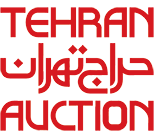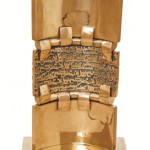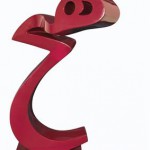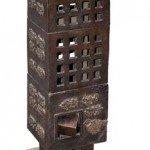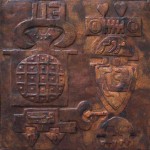Like other works of Tanavoli, his Heech-shaped sculptures interpret his thoughts free from any words. Although a simple Heech (nothing), it is everything and it shows the artist’s passion for life.
These Heech sculptures mark a significant period of his career. Tanavoli started making Heech sculptures as a young artist a short while after he established the Saqqakhaneh School along with a group of artists of his generation upon his return from US. Choice of Heech was connected to lingual and verbal achievements of the Saqqakhaneh School. Nevertheless, there is an essential concept within Heech that makes it independent of any central meaning. While being Heech (nothing), the sculpture is an ocean of images and meanings. It is a collection of contradictions, a true paradox. From a different perspective, it gives birth to a kind of Conceptual Art. In its early phase of development and within the context of eclipsing Modernism, Conceptual Art originated from the element of language, manifested in a variety of lingual games. Nevertheless, it can be said that what distinguishes Tanavoli’s usage of words from western Conceptual Art is the lack of sufficient theoretical principles in phenomenological study of Iranian art.
In a conscious reaction, Tanavoli started exploiting calligraphic forms that once were used by the artists associated with the Saqqakhaneh School and later calligraphy-painting movements, focusing on formal aspect of the word by turning the structure of sculpted Heech into a specific form. He initially began using Heech in painting, then employed it in sculptures with different materials, and finally made it into sculptural combinations. Tanavoli’s Heech sculptures do not convey any meanings, slanting toward figurative forms that use three letters of Persian alphabet in their turns and twists. “ھ” indeed resembles the two eyes of the sculpture, while “ی” and “چ” complement its well-shaped, coquettish figure. It seems that Tanavoli is the first Iranian artist who, disregarding aesthetic qualities of calligraphy, concentrated on calligraphic form and sculptural reproduction of the word.
Heech, in Tanavoli’s eyes, is a well-formed figure that, diverging from its verbal quality, is acquiring a figurative nature. Prevailing quality of his works surpasses cursive Persian calligraphy to turn into a flirtatious sculptural context and liberate “form” from bonds of “word” in absolute perfection and a lyrical tone. It is a Heech (nothing) multiplied by Heech – a conscious play of form with a subject only the appearance of which is Heech (nothing).
This collection of Tanavoli’s sculptures enjoy both a domestic and international market. A large example of this sculpture was sold for $240,000 at Bonhams, March 2008.
